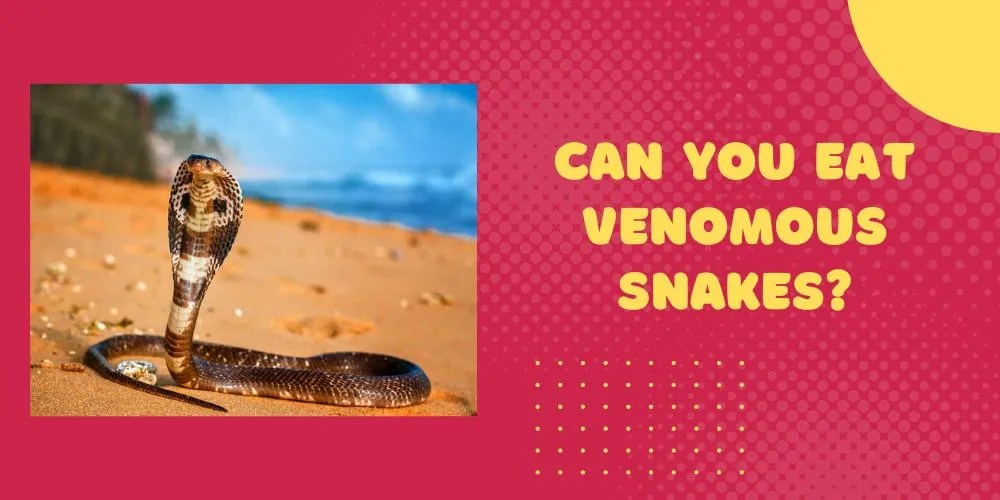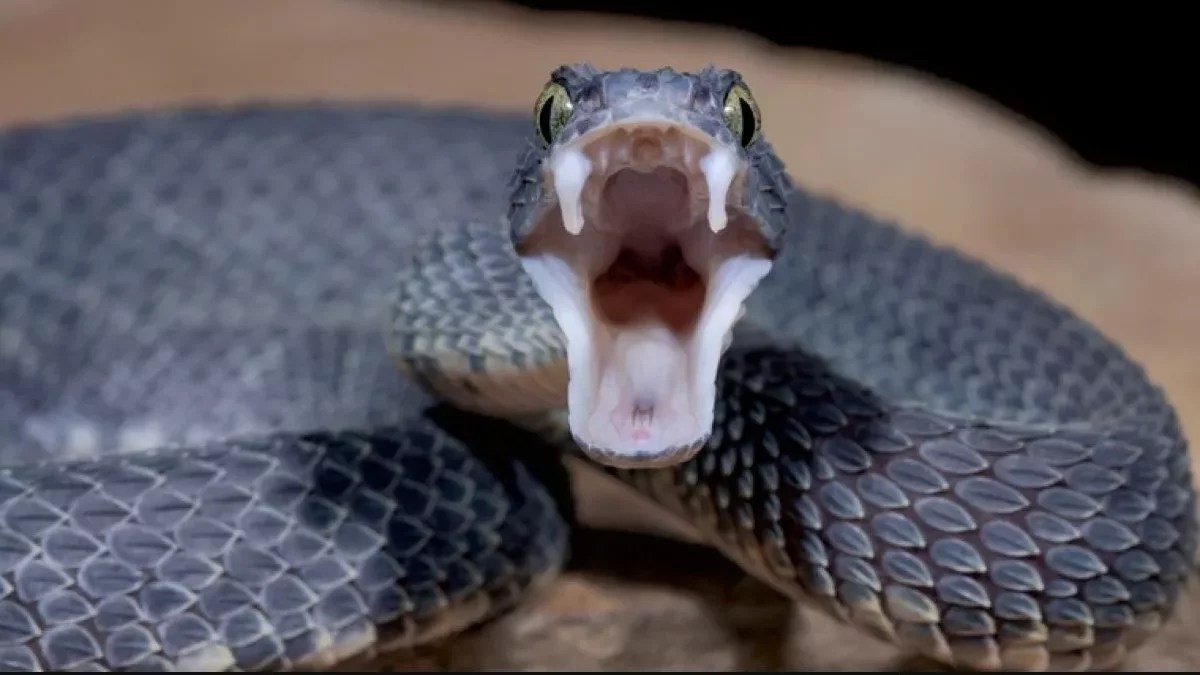Have you ever wondered if it's safe to eat venomous snakes? This intriguing question often arises when discussing exotic foods and culinary adventures. In this article, we will explore the fascinating world of venomous snakes, their edibility, and the cultural significance of consuming these reptiles. Many cultures around the world regard certain snakes as delicacies, while others avoid them due to the potential risks involved. Understanding the nuances of this topic will provide you with the knowledge to make informed decisions.
The consumption of venomous snakes is not common in most parts of the world, but it does occur in some cultures. This article aims to demystify the myths surrounding the edibility of these reptiles and provide insights into both the culinary and health aspects of eating venomous snakes. We will also examine the nutritional benefits, potential risks, and precautions that should be taken if you ever find yourself in a situation where you are considering trying this exotic food.
In addition, we will delve into the preparation methods, popular recipes, and the legalities surrounding the consumption of venomous snakes in different regions. Whether you are a culinary adventurer or simply curious about this topic, this article will provide valuable information and insights.
Table of Contents
- What Are Venomous Snakes?
- Cultural Significance of Eating Snakes
- Nutrition Facts of Snake Meat
- Health Risks of Eating Venomous Snakes
- Preparation Methods for Snake Meat
- Popular Recipes for Cooking Snake
- Legality of Eating Venomous Snakes
- Conclusion
What Are Venomous Snakes?
Venomous snakes are species that possess venom, a toxic substance that they use primarily for hunting and self-defense. Unlike non-venomous snakes, which rely on constriction or other methods to subdue their prey, venomous snakes inject venom through their fangs. Some well-known venomous snakes include:
- King Cobra
- Black Mamba
- Rattlesnake
- Fer-de-Lance
Despite their reputation, not all venomous snakes are lethal to humans, and the risk of envenomation can often be mitigated through proper handling and preparation.
Cultural Significance of Eating Snakes
The practice of eating snakes is deeply rooted in various cultures around the world. In many Asian countries, snake meat is considered a delicacy and is believed to have health benefits. For example:
- In Vietnam, snake wine is a popular beverage made by infusing rice wine with a whole snake.
- In China, snake soup is a traditional dish that is thought to increase vitality.
- In parts of Africa, snake meat is consumed as a source of protein during food scarcity.
These cultural practices highlight the importance of snakes in local cuisines and their perceived nutritional value.
Nutrition Facts of Snake Meat
Snake meat is often praised for its nutritional profile. Here are some key nutritional facts:
- High in protein: Snake meat is a great source of lean protein.
- Low in fat: It contains significantly less fat compared to traditional meats.
- Rich in vitamins: Snake meat provides essential vitamins such as B12 and niacin.
These attributes make snake meat an appealing alternative for those seeking healthier protein sources.
Health Risks of Eating Venomous Snakes
While consuming snake meat can be safe, there are potential health risks associated with eating venomous snakes:
- Risk of envenomation: Proper preparation is crucial to ensure that any remaining venom is neutralized.
- Parasites: Snakes can carry parasites that may pose health risks if not cooked properly.
- Contaminants: Snakes may accumulate toxins from their environment, which can be harmful if ingested.
It is essential to source snake meat from reputable suppliers and to ensure it is cooked thoroughly to minimize health risks.
Preparation Methods for Snake Meat
Preparing snake meat requires specific techniques to ensure safety and flavor:
- Cleaning: Thoroughly clean the snake to remove any residual toxins.
- Cooking: Cook snake meat at high temperatures to kill any parasites or bacteria.
- Flavoring: Use marinades and spices to enhance the flavor of the meat.
Following these steps can help ensure that the snake meat is both safe and enjoyable to eat.
Popular Recipes for Cooking Snake
Here are a few popular recipes that showcase how to prepare snake meat:
- Grilled Snake Skewers: Marinate pieces of snake meat in a spicy sauce, then grill until charred.
- Snake Soup: Simmer snake meat with herbs and spices to create a flavorful broth.
- Fried Snake Nuggets: Bread and fry small pieces of snake meat for a crunchy snack.
These recipes highlight the versatility of snake meat in various culinary applications.
Legality of Eating Venomous Snakes
The legality of consuming venomous snakes varies by region:
- In some countries, hunting and consuming snakes is permitted and culturally accepted.
- In others, it may be illegal due to conservation efforts or safety regulations.
- Always check local laws and regulations before attempting to consume or hunt snake species.
Understanding the legal implications is crucial to ensure responsible consumption.
Conclusion
In summary, eating venomous snakes is a complex topic that encompasses cultural significance, nutritional benefits, and potential health risks. While it is possible to consume these reptiles safely, it is essential to follow proper preparation methods and be aware of local laws. If you have the opportunity to try snake meat, approach it with an open mind and a focus on safety. We encourage you to share your thoughts and experiences in the comments below, and check out our other articles for more culinary adventures!
Thank you for reading! We hope this article has provided valuable insights into the fascinating world of venomous snakes and their edibility. We look forward to seeing you again soon!
Pat Monahan And Wife: A Deep Dive Into Their Relationship
Honey, I Shrunk The Kids Cast: A Deep Dive Into The Beloved Film's Characters
Exploring The Life And Career Of Danny Mountain


